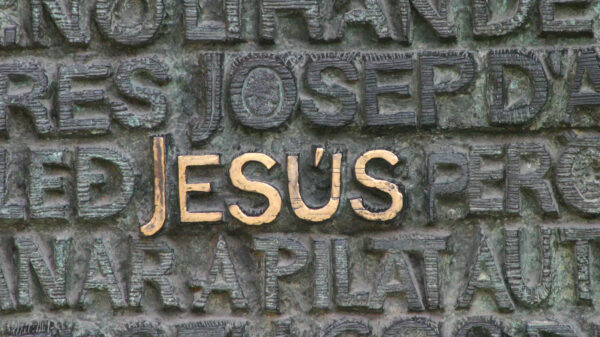
In 538 B.C. Daniel wrote the following bold prediction:
Daniel 9:25
“So you are to know and discern that from the issuing of a decree to restore and rebuild Jerusalem until Messiah the Prince there will be seven weeks of years and sixty-two weeks of years”
In this prophecy (written 538 years before Christ was born), Daniel claimed there would be 69 “weeks of years” between the issuing of a decree to rebuild Jerusalem and the appearance of the Messiah. In 464 BC, Artaxerxes, a Persian king, ascended to the throne. Nehemiah, the Jewish cupbearer to King Artaxerxes, was deeply concerned about the ruined condition of Jerusalem following the defeat of the Jews (Nehemiah 1:1-4). As a result, he petitioned the king:
Nehemiah 2:5,6
“Send me to Judah, to the city of my fathers’ tombs, that I may rebuild it. So it pleased the king to send me”.
According to the Old Testament, the decree to restore and rebuild Jerusalem was issued “in the month Nisan, in the twentieth year of Artaxerxes the king” (Nehemiah 2:1). The Jewish calendar month was Nisan, and since no day is given, it is reasonable to assume the date would be understood as the first, the Jewish New Year’s Day. And, in the Julian calendar we presently use, the corresponding date would be March 5, 444 BC.
So when did the Messiah appear? Jesus, on numerous occasions, forbade and prevented his followers from revealing His identity as the Messiah. He frequently performed miracles and swore His disciples to silence, saying his “hour has not yet come” (John 2:4, 7:6). But, on March 30, 33 A.D., when he entered Jerusalem on a donkey, he rebuked the Pharisees’ protest and encouraged the whole multitude of his disciples as they shouted, “Blessed is the King who comes in the name of the Lord”. Jesus even said, “If these become silent, the stones will cry out” (Luke 19:38-40). This was the day on which Jesus was publicly declared the Messiah.
Let’s compare then, the date of the decree (March 5, 444 BC) with the date of Jesus’ declaration (March 30, 33 AD). Before we begin, we must clarify (as noted by Anderson) an important feature of the Jewish prophetic year: It was comprised of twelve 30 day months (it had 360 days, not 365 days). Since Daniel states 69 weeks of seven years each, and each year has 360 days, the following equation calculates the number of days between March 5, 444 BC (the twentieth year of Artaxerxes) and March 30, 33 AD (the day Jesus entered Jerusalem on the donkey):
69 x 7 x 360 = 173,880 days
Now let’s compare Daniel’s prophecy with the true interval between the two events. The time span from 444 BC to 33 AD is 476 years (remember 1 BC to 1 AD is only one year). And if we multiply 476 years x 365.2421879 days per year (corrected for leap years), we get the result of 173,855 days. Close, but not precisely what Daniel predicted (although I still think this is pretty amazing). Now let’s add back the difference between March 5 and March 30 (25 days). What is our total? You guessed it, 173,880 days, exactly as Daniel predicted.
The ancient Jews were careful to use prophecy as a measuring stick. If someone claimed to be a prophet, yet his predictions did not come true, he was abandoned and his writings did not make it into the Canon of Scripture:
Deuteronomy 18:22
When a prophet speaketh in the name of the LORD, if the thing follow not, nor come to pass, that [is] the thing which the LORD hath not spoken, [but] the prophet hath spoken it presumptuously: thou shalt not be afraid of him.
Sir Robert Anderson understood the degree to which the authors of the Old Testament treated fulfilled prophecy as evidence of Divine origin. The ancient authors recognized only God could “declare the end from the beginning” and forecast to the very day “things that are not yet done” (Isaiah 46:10). Anderson’s investigation highlighted perhaps the greatest prophetic declaration of all.

J. Warner Wallace is a Dateline featured Cold-Case Detective, Senior Fellow at the Colson Center for Christian Worldview, Adj. Professor of Christian Apologetics at Talbot School of Theology, Biola University, author of Cold-Case Christianity, God’s Crime Scene, and Forensic Faith, and creator of the Case Makers Academy for kids.
Subscribe to J. Warner’s Daily Email
J. Warner Wallace is a Dateline featured cold-case homicide detective, popular national speaker and best-selling author. He continues to consult on cold-case investigations while serving as a Senior Fellow at the Colson Center for Christian Worldview. He is also an Adj. Professor of Christian Apologetics at Talbot School of Theology, Biola University, and a faculty member at Summit Ministries. He holds a BA in Design (from CSULB), an MA in Architecture (from UCLA), and an MA in Theological Studies (from Gateway Seminary).

































Pingback: The Case for the Reliability of the Old Testament (Bible Insert)
Pingback: Eight Steps to Investigating the Case for Christianity | Apologetics ForumApologetics Forum
Pingback: Christian Evidence | Reasoned Cases for Christ
Pingback: Sun Mar 17, 2019 | Jordan and Amy Husband
Pingback: No, the argument from miracles has not been debunked (Pt. 1)
Kevin
January 3, 2023 at 1:13 am
https://www.tapatalk.com/groups/joelstrumpet/daniel-9-25-26-and-the-year-of-crucifixion-t1601.html
Sir Anderson made some minute mistake , the above link has found the exact date when jesus returned as a prince using the prophecy of Daniel